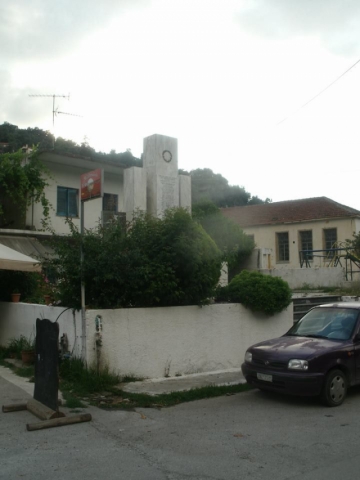Your Position:
Unknown
4ο ΝΗΠΙΑΓΩΓΕΙΟ ΜΟΥΣΟΥΡΩΝ-ΜΕΣΚΛΩΝ
Προτείνετε
Προτείνετε
Η γνώμη σας

Αν θέλετε να μας πείτε την άποψη σας γι αυτήν την τοποθεσία, θα σας παρακαλούσαμε να γράψετε ένα σχόλιο.
Σχολιάστε:
Μέρη κοντινά με 4ο ΝΗΠΙΑΓΩΓΕΙΟ ΜΟΥΣΟΥΡΩΝ-ΜΕΣΚΛΩΝ
Το φαράγγι της Σαρακήνας ξεκινάει από τη Ζούρβα και καταλήγει στα Μεσκλά όπου βρίσκονται οι πόρτες του φαραγγιού με ύψος περίπου 15 μ. και πλάτος περίπου 1,5μ.
Η βλάστηση είναι πλούσια και οι σχηματισμοί και οι σπηλιές ιδιαιτέρου φυσικού κάλλους.
Το φαράγγι αυτό είναι αρκετά δύσβατο γιατί δεν υπάρχει διανοιγμένο μονοπάτι και η πυκνή βλάστηση δυσκολεύει την πρόσβαση. Κατά τη διάρκεια του καλοκαιριού και μέχρι τις πρώτες φθινοπωρινές βροχές, διανύεται εύκολα η απόσταση των 200 μέτρων μέχρι τις πόρτες.
Built among large orange groves, Meskla looks so serene and pretty that it is hard to think it was twice destroyed in the past. But it was. The Venetians, first, and the Turks later, laid everything waste, and it is indeed very fortunate that two Byzantine churches managed to survive, even though they were seriously damaged.
It can be reached by taking the exit to the left in the village of Fournes. The road on the right heads for the villages of Lakki and Omalos. A narrow road with many curves that leads through forest, orange groves and olive groves will take you to Meskla in about 20 to 30 minutes. Meskla is the site of an ancient city, and various artefacts and remains of cyclopean walls have been found here.
The church of Christ the Saviour has some wonderful wall paintings by the hand of the Veneri brothers (1403), but unfortunately they suffered severe and irreparable damage. The church of the Virgin Mary, a little further to the north, is particularly interesting, as it contains parts of earlier buildings including a temple of Aphrodite that was once built in this exact place.
It is also worth noting that the mosaic covering part of the present church floor was once the mosaic floor of a fifth century basilica. Finally, around the village one can see many ancient ruins of homes as well as parts of a city wall. Although it is not certain which city that wall surrounded, the ruins are thought to belong to the ancient town of Rizinia.




